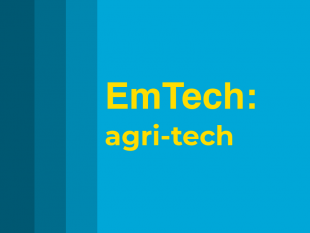
In this second instalment of our Emerging Technology (EmTech) blog series we are exploring some new technologies for agriculture. This series covers some of the innovative and exciting technologies the Government Office for Science’s (GOS) EmTech Scanning Programme has identified.
The Future of Farming
The transition from hunter-gatherer to agricultural societies over 10,000 years ago was a significant development in the human story. In more recent times, agriculture has experienced yield-enhancing revolutions through mechanisation and the introduction of new crop varieties and agricultural chemicals. Yet, yields of staple crops such as rice and wheat have stopped rising in some intensively farmed areas, a phenomenon called yield-plateauing. As global food demand rises, and in the face of more unpredictable seasonal weather, farming practises will need to adapt to ensure food supply security. Below are three emerging technologies identified by GOS’ EmTech Scanning Programme that suggest directions that agriculture may take.
Aquaponics
Space to farm vegetables can be limited in cities. An urban farming technique known as aquaponics may allow us to grow plants without the need for traditional garden spaces. Aquaponics involves closed-loop systems that integrate aquaculture (e.g. fish farming) with hydroponics (growing plants without soil). It is a cooperative process where plants feed directly on aquatic animals’ waste, and in return the plants clean the water that goes back to the fish. Specifically, bacteria convert animal waste into nitrates which plants absorb as fertiliser. The result is an ability to grow crops using a fraction of the water, no fertilizers, and without the risk of soil-borne disease. Small-scale aquaponics farms are in operation in the UK, but the economics are challenging at present. If made cheaper, aquaponics could provide a sustainable farming environment for small city spaces.
Precision farming
Precision farming combines sensors, robots, GPS, mapping tools and data-analytics software to tailor plant care without increasing labour. Drones and sensors can monitor the condition of individual plants and their local environments, rather than whole fields. Resources such as water and fertilisers are then delivered only where and when needed. Optimising the routes of GPS-enabled robot tractors that weed and harvest, can reduce fuel consumption and avoid soil compaction. This style of farming can improve time management, reduce water and chemical use, and produce healthier crops and higher yields. A UK company is currently trialling a trio of agri-robots for crop and soil monitoring, micro-spraying and non-chemical weeding, and precision drilling and planting.
Gene editing for crops
A new gene-editing technique, CRISPR-Cas9, is providing a precise way to modify crops. The idea is to develop crops that yield more food and are more resistant to drought and disease. A lab in China has used it to create a fungus-resistant wheat; several other groups in China are using the technique to boost rice yields; and a team in the UK has used it to tweak a seed germination gene in barley, which could aid efforts to produce drought-resistant varieties. At present, different countries and regions are taking different regulatory approaches to the use of this technology. In cases where CRISPR-Cas9 is subject to the stricter regulations of genetically modified organisms, there are extra barriers to growing these crops.
These technologies demonstrate some of the emerging innovations being used in agriculture to address key opportunities and challenges such as increasing yields, decreasing labour intensity, and managing the environmental impact of farming. These technologies and many more identified by GOS’ EmTech Scanning Programme offer significant promise to enhance the long-term sustainability of the global food supply chain.
If you think that exploring emerging technologies could be important or useful for policy development in your area and want to use the findings from our EmTech Scanning Programme, please get in touch with us.